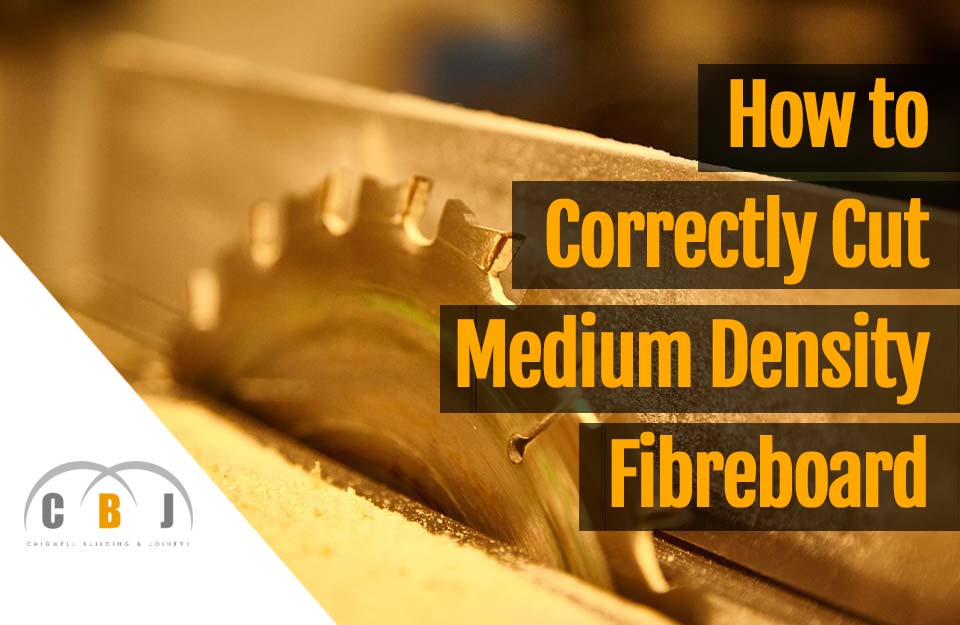
How to Correctly Cut Medium Density Fibreboard
Author Chigwell Building & Joinery
Date 13/11/17
Get the Best Results with Our MDF Cutting Guide
MDF is a hugely popular material in the building industry due to it’s versatility and relatively low cost.
Usually found in the construction of furniture pieces, shelving and cabinet carcasses, this man-made substance is relatively easy to cut and machine cleanly if you know how, using the correct tools for the job.
As it is essentially made from compressed recycled wood dust particles combined with resins, there’s no actual wood grain to be concerned about during cutting.
However, even though it is a relatively tough material as whole, it can chip and break quite easily if the wrong cutting tools or blades are used as edges are brittle and at times, easily broken.
So if you plan to carry out a relatively big project that relies on a lot of MDF sheets, here’s our guide to cutting this popular material correctly.
Using a Table Saw
Firstly, ensure you are using a laminate blade when using a table saw and set the blade to be about 12-13mm higher than the thickness of the MDF sheets you intend to cut.
Make sure the surface of the table saw is completely clean before attempting any cuts as any debris present may cause a bad cut if the board moves or is misaligned.
As you cut the MDF sheet with a table saw, you will undoubtedly produce a lot of dust particles.
MDF is know to contain unpleasant chemicals including urea formaldehyde which is regarded as a probable human carcinogen so before you start cutting, always place a suitable mask over your mouth and eye protection to prevent dust getting into your eyes.
When ready to cut, turn on your table saw and feed the MDF slowly towards the blade in one fluid motion and continue until the entire board has been cut.
This should give you suitably clean edges and the best possible finish.
Using a Router
To get a good cut with a router, use a carbide flute bit.
Do bare I mind however, when using a router that you should aim to cut the MDF fractionally larger than you need it to be.
Then use the router to further trim to edges down to the correct size.
To get the final straight edge, use a router table or jog for a perfect finish.
Using a Jigsaw or Circular Saw
Both of these saws can be used to cut MDF however, the surface of the medium density fibreboard must be scored prior to cutting if laminated.
Firstly, put the MDF onto a steady work surface or saw horse and clamp into place to prevent movement.
Now, mark out your cut lines using a straight edge and a piece of chalk or pencil.
Once you have a line drawn, take a utility or Stanley knife and run the knife along the cut line using minimal pressure at a steady to slow speed.
Do this until you successfully cut through the laminated surface.
Now use a carbide blade with a TPI of at least 20 and cut the MDF with the laminae surface showing upwards and go nice and slowly and steadily until you have completely cut the entire sheet.


